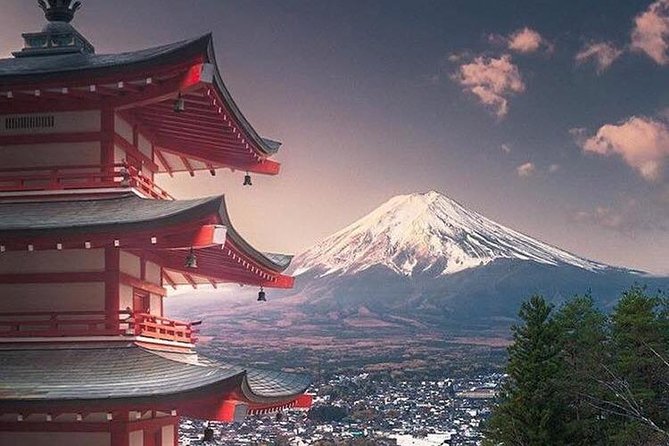Full day trip Sightseeing Japan’s iconic Mt. Fuji, including a Lake Ashi cruise and a visit to Mt. Komagatake options
Your day starts early with pickup by deluxe coach at select hotels and locations in Tokyo. Take in the scenery as you depart Tokyo for a 2.5-hour drive to Mt Fuji, Japan’s highest mountain. Proceed by coach to Mt Fuji’s 5th Station that is located at 7,545 feet (2,300m) about halfway up the mountain and offers another vantage point for Mt Fuji and the surrounding lakes (subject to weather conditions). The 5th Station also features shrines, torii gates, souvenir shops, and perhaps a few climbers completing their preparations for their ascent.
Then have time to enjoy Japanese-style lunch (if you select the “+ Lunch” option at checkout). Otherwise, you have the option to buy your own meal.
Then drive to Lake Ashi, located nearby in Hakone National Park. Admire the pretty scenery as you take a short cruise across the lake, which is surrounded by mountains including Mt Fuji and Mt Komagatake.
The journey to the top of Mt Komagatake on the Mt Komagatake Ropeway, an aerial tram that lifts off from the shores of the lake and takes you up Mt Komagatake in an enclosed cabin with 360-degree views. When you reach the summit, enjoy time to take in views over Lake Ashi and Mt Fuji.
You can also take a short stroll along one of the walking trails at the mountain top. After visiting Mt Komagatake, transfer by coach to the evening bullet train (Shinkansen) for your return to Tokyo Station
MOUNT FUJI
Rising to 12,388 feet (3,776 metres), Mount Fuji is the tallest mountain in Japan and is known for its graceful conical form. It is the country’s sacred symbol, and temples and shrines are located around and on the volcano.
Formed approximately 100,000 years ago, repeated volcanic eruptions gradually transformed Mt. Fuji into the largest mountain in Japan, at 3,776 meters tall. The last eruption in 1707 lasted for 16 days, with volcanic ash reaching as far as Tokyo. Volcanic activity is also responsible for creating Hoeizan (one of Fuji’s secondary peaks), the five lakes at the mountain’s base, and numerous caves near Aokigahara Forest. The area is also blessed with many mineral-rich hot springs, making the region a paradise for both outdoor recreation and relaxation.
Around 200,000 to 300,000 people climb Mt. Fuji every summer. Climbing up to the summit is popular at sunrise—climbers often begin their climb the previous day and stay overnight at a lodge on the mountain, then start climbing early the next morning to watch the sun rise over the horizon. In pre-modern times, Mt. Fuji served as a destination for shugenja, practitioners of Shugendo, an acetic mountain worship faith, to undergo training, and even the lower classes were known to make pilgrimages here. The numerous shrines at the base of the mountain are a testament to Mt. Fuji’s spiritual and historical significance. cc


